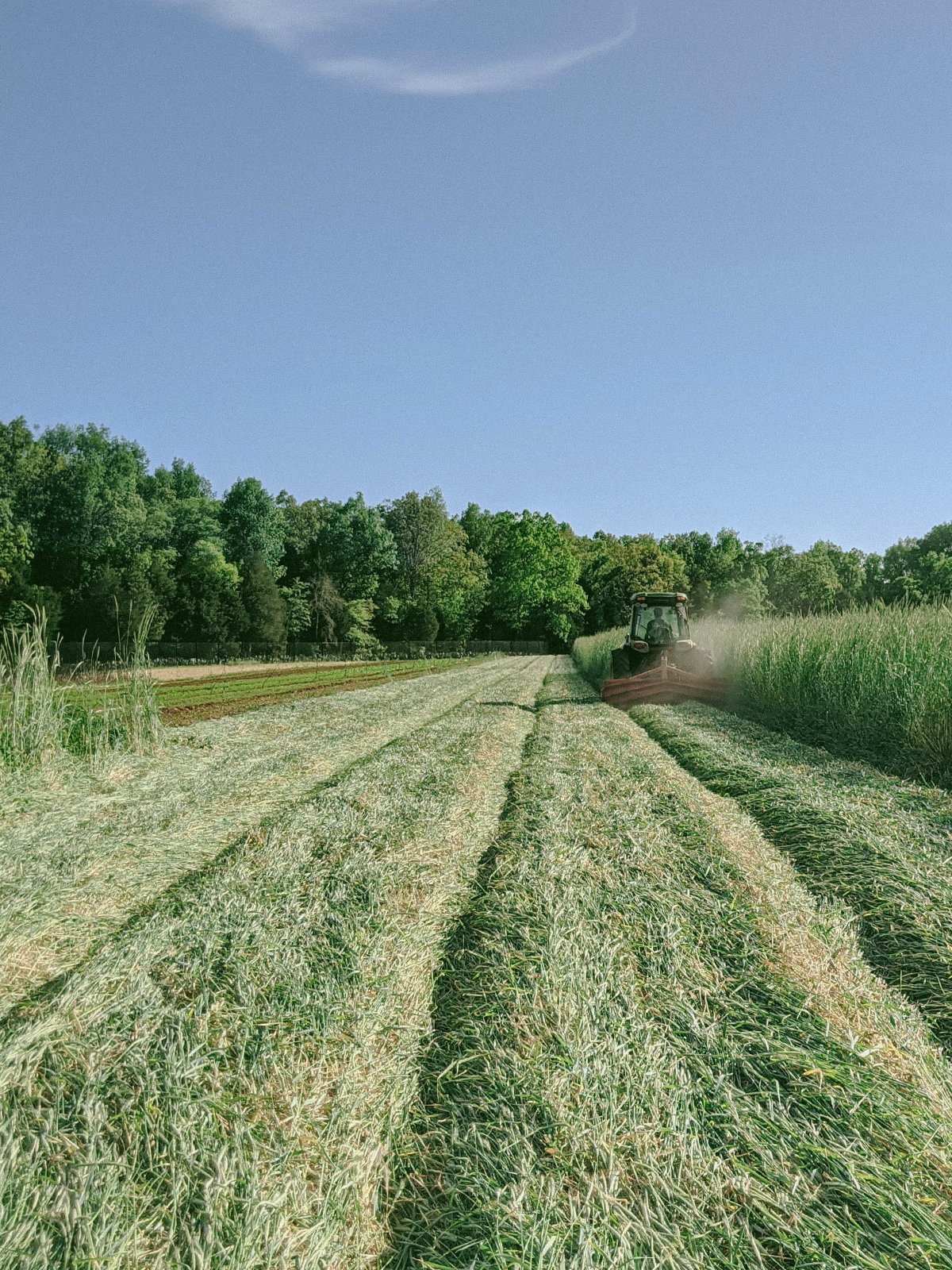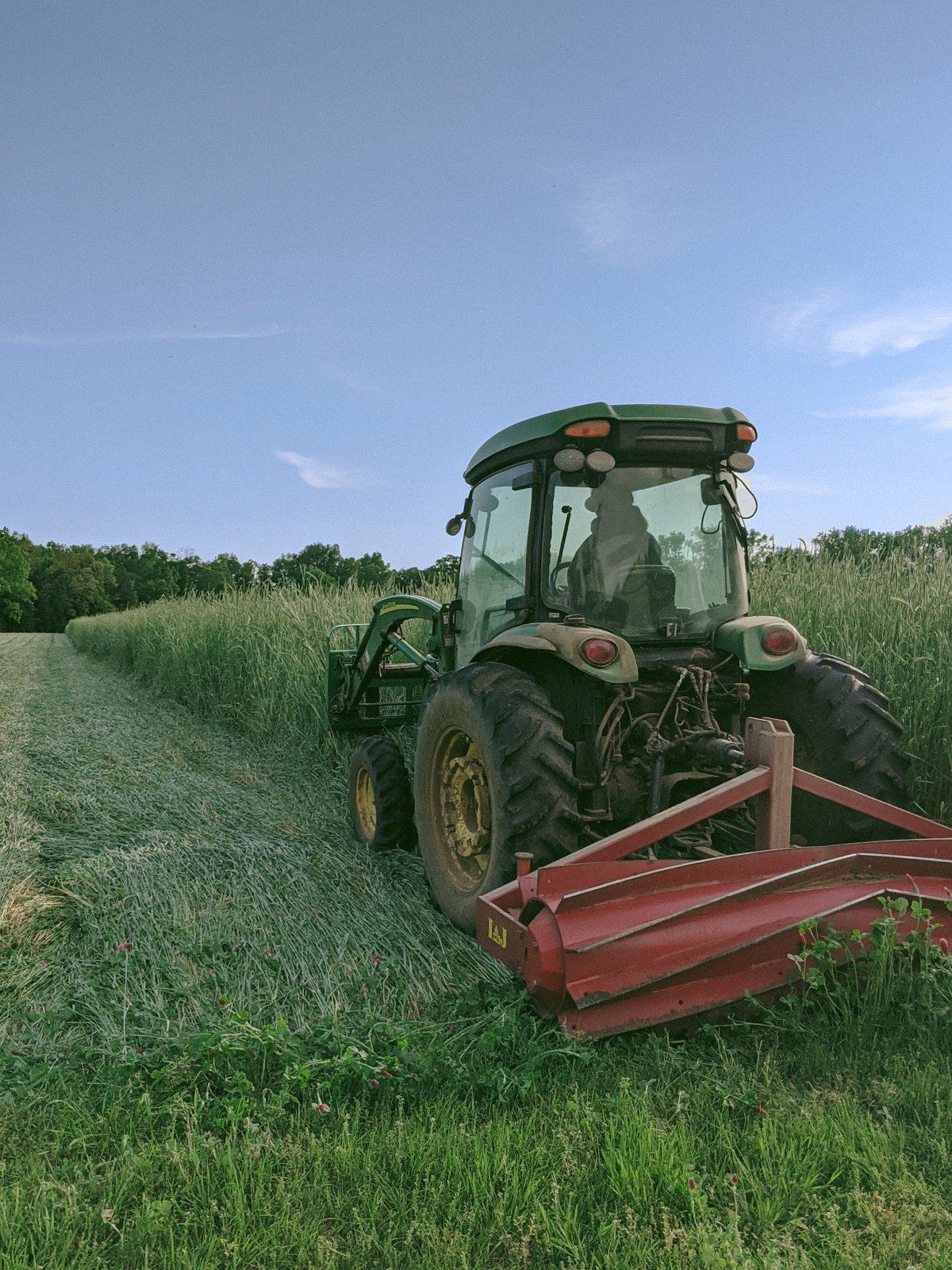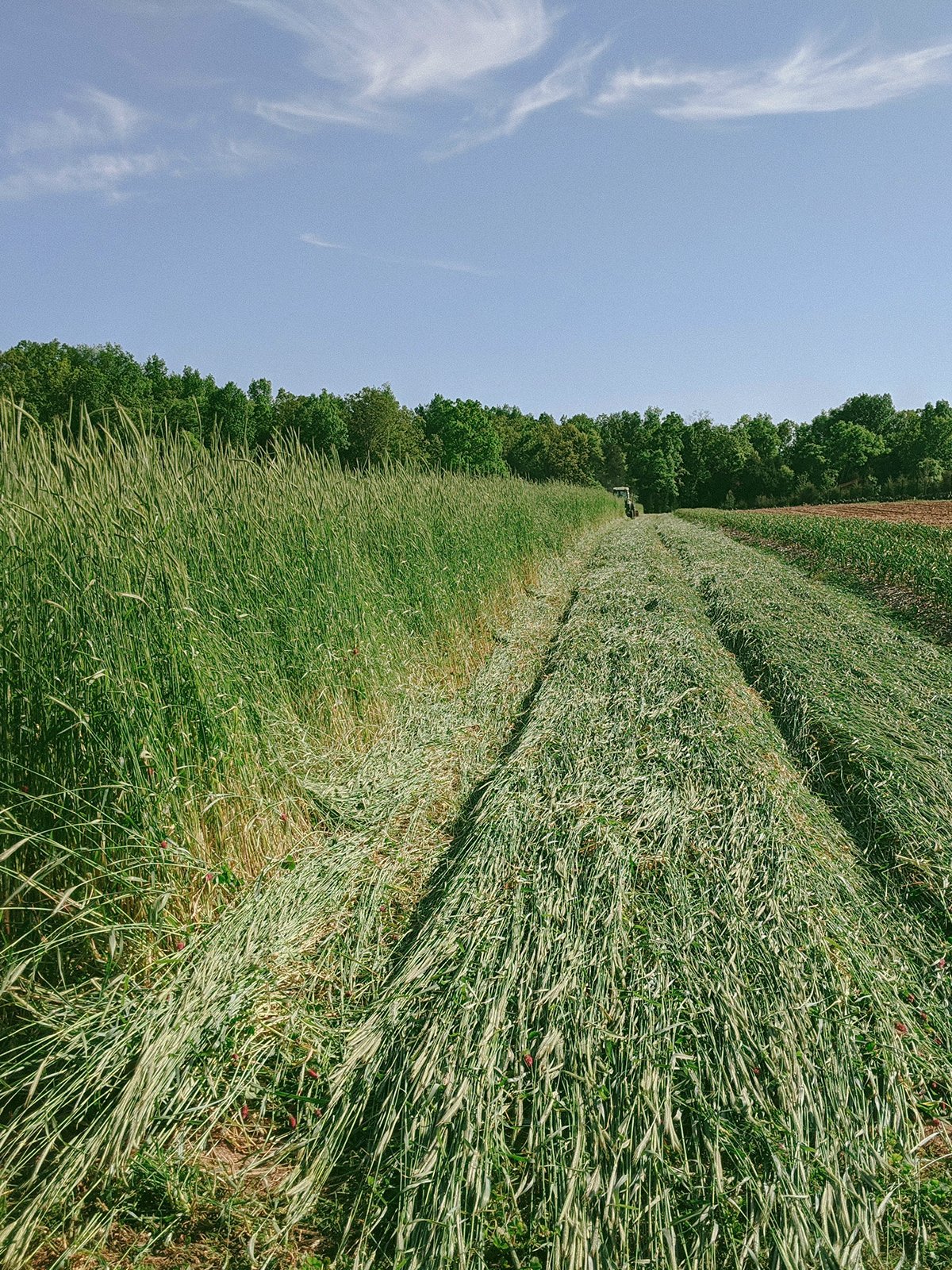WHY Reduced Tillage?
Many criticize organic farming as it relies heavily on tillage as a tool for weed suppression. This can be problematic as tillage disrupts the soil structure and the microorganisms that are critical to soil health. We are intentional about reducing our tillage in an effort to build up our soil health. However as a new farm, moving towards a “no-till” system is a long-term goal that requires tillage to get to a point where we don’t rely on it as heavily. The term “no-till” is confusing as it is interpreted differently so we identify our farm as a “reduced tillage” farm, exploring new ways to push the needle in the direction of no-till through tarping, roller crimping, and other methods.
How do we do this?
Roller Crimper: Using the roller crimper as a no-till approach relies on biology rather than chemicals to feed the soil through cover cropping. Cover crops (an off-season crop not meant for harvesting) are planted after our vegetable crops have been harvested, minimizing the time the soil is left bare and adding nutrients to replenish the soil. We select the cover crop variety and type based on the time of year and the nutrient needs of the subsequent cash crop. When the cover crop has matured, we use the roller crimper (see images below) to terminate the crop without disturbing the root structure. The crimped cover crop serves as a thick mulch which we plant into for weed-free crops all summer long. For some crops, we add leaf mulch on top of the crimped cover crop for extended weed suppression.
Tarping: We also use tarps as a method to reduce our tillage. Tarps are applied on raised beds for several weeks to kill annual weeds. We rely on tarps most heavily in the early spring when the field is too wet to use the tractor to avoid compaction. Tarps are not an effective means for killing perennial weeds like dock!
What are the benefits?
There are many ecological and financial benefits to reducing tillage through roller crimping as listed below:
Reduced erosion: with climate change and the volatile weather that follows, it is critical to reduce the amount of exposed soil during periods of heavy rain or wind. Cover crop roots help stabilize the soil and prevent run-off.
Increased nutrients: many cover crops scavenge for nutrients deep in the soil and as the cover crop begins to decompose, they slowly release these nutrients for use of cash crops.
Weed management: cover crops help smother weeds and serve as a mulch grown in place. Some cover crops, like rye, further suppress weeds through their allelopathic effects.
Labor & fuel reduction: time spent cultivating the field with the tractor or with hand weeding tools drops close to nothing since the cover crop controls weeds for us. This enables huge savings through labor and fuel expenses!
Increased biological activity: limiting tillage reduces the soil disturbance, which supports a stable habitat for microorganisms to live and feed off the cover crop roots. The cover crops also provide habitat for beneficial insects above ground including spiders and other insects that feed on pests.
Increased carbon sequestration: higher residue cover crops create larger volumes of plant biomass and store more carbon in the soil.
Our roller/crimper attached to the back of the tractor about to go over the over-wintered rye grass.
Winter squash and melons are great for no-till beds!
Transplanting tomatoes into the thick green mulch of the crimped cover crop.
After harvesting the crops grown in our no-till beds, we extend the use of our rye debris by planting garlic in these beds late fall.
Research
In 2020 we received a Southern SARE grant to explore Summer Cover Crops for Organic No-till Broccoli. Using 5 treatments, we are investigating the best mix of summer cover crops (sunn hemp, japanese millet, soybeans and buckwheat) for a roller-crimper no-till fall broccoli production.
If we find a successful mix, this will bring our no-till crops to a more significant percent of our total production, increasing our ecological and financial sustainability as a farm business.
In order to investigate which summer covers work the best, we will evaluate 1) weed suppression 2) total yields and 3) total labor hours for each treatment including bed preparation, transplanting and weeding.







